Author: Dave Williams
Published: 23rd June 2002
A Knight in Shining LEDs
Okay, this circuit is really part of the "Knight Rider" project. I have separated it purely for the benefit of web search engines looking for a "Hard Drive Activity Meter". It uses the same basic circuit, circuit board designs and construction as before, and therefore I am not going to repeat all that detail. I strongly suggest you refer to the "Knight Rider" project for construction details.
This circuit is designed as a replacement for the standard HDD activity LED and offers an indication of the amount of activity by lighting a row of LEDs. The higher the HDD activity, the more LEDs light. It does not give a reading of actual Mb/s, just how hard the drive is working.
The circuit is based around the "Classic" Knight Rider design and differs only with R3 being fitted in it's alternate position, the addition of IC4 and R6, and VR1 is replaced with a wire link.
The opto-isolator, IC4, connects to the HDD LED header on the motherboard and serves to isolate the circuit from the rest of the system whilst ensuring compatibility with just about every motherboard that has a HDD LED. As the HDD reads and writes it produces a stream of pulses which are fed to the circuit via the opto-isolator. These pulses are fed into IC1b, which buffers and shapes these pulses before feeding them into IC1a. IC1a is an integrator whose job it is to "smooth" these pulses into a voltage level. This voltage is reasonably proportional to the frequency and duration of the pulses generated by the HDDs activity. Hence, the busier the drive, the higher the voltage. This voltage is fed from the output of IC1a into IC2 which is an LED bargraph voltmeter. So in a nutshell, the busier the drive, the more LEDs light up. Similar to the previous circuits, the display can be operated in either DOT or BAR mode and has 10 and 20 LED variations.
VR3 sets the "zero" and is adjusted so that all the LEDs are just extinguished with no HDD activity. VR2 is the "span" and is adjusted so that all the LEDs are lit during heavy or constant drive activity. This span adjustment is somewhat subjective and is found by trial and error during HDD activity.
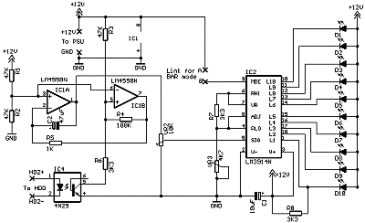
Parts List with order codes for UK and US suppliers

10 individual LED version
This board design like the others following, uses R3 in it's alternate position and has additional components IC4 and R6. VR1 is also replaced with a wire link. These changes to the layout are denoted in red. This board has two links, one of which replaces VR1.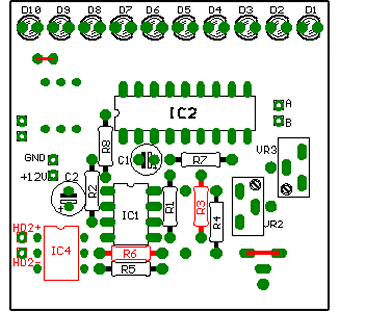
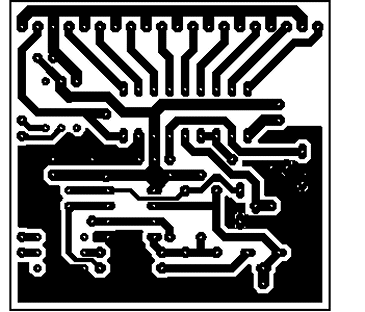
Component layout - top view (left) and Track layout - Viewed from above (right)

The finished board.
Single LED array version
Note the two links on the circuit board and that R3 is fitted in it's "alternate" position.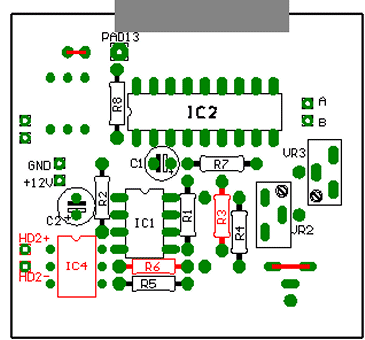
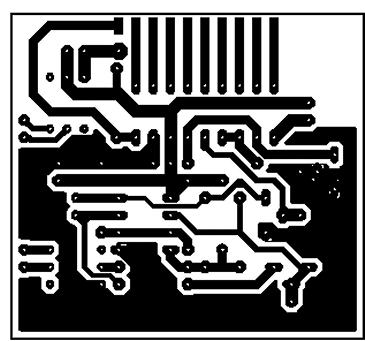
Component layout - top view (left) and Track layout - Viewed from above (right)


The finished board and the detail of how the anodes are linked together and connected to the board using pad13, indicated by the red
20 LED versions
In this design the effect is of a pair of LEDs moving away from each other, (DOT mode), or, if using BAR mode, a row of LEDs expanding outwards away from each other.
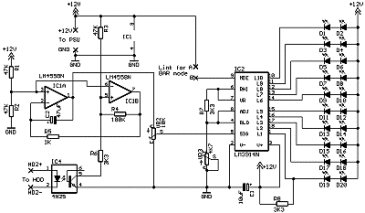
Parts List with order codes for UK and US suppliers

20 individual LED version
As in all the board designs for the HDD meter, R3 is fitted in its alternate position and VR1 is replaced with a wire link. There is a total of three links on this board.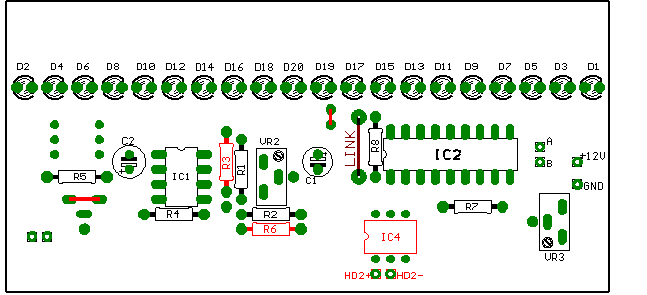
Component layout - top view.
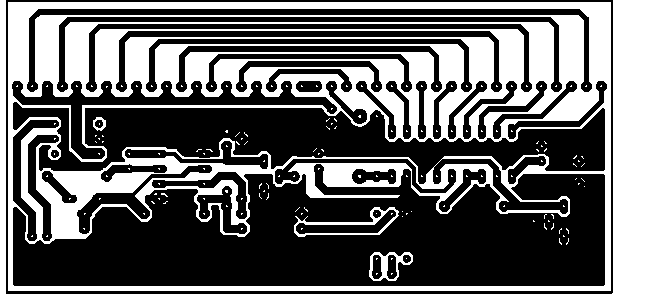
Track layout - Viewed from above.

The finished board.
The PCB layout if using two 10 LED arrays
Again three links are used here.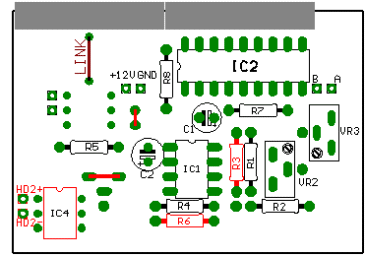
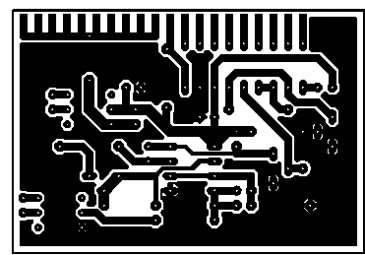
Component layout - top view (left) and Track layout - Viewed from above (right)

The finished board.
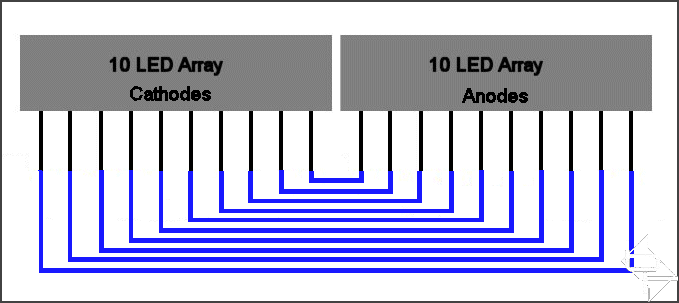
Wiring detail between the LED arrays viewed from above.
Setting up

Setting up is simple but does involve a degree of trial and error. As before, I have included some resistance settings for VR2 and VR3 to give a reasonable starting point. Remember to set these measurements with the power disconnected from the circuit.
It helps to have the meter in BAR mode when setting up. With power connected and the HDD LED connection from the motherboard plugged in to the meter board, adjust VR3 so all the meter LEDs are just off. Then give the HDD something to do, I copied the pak0.pk3 file from the Quake 3 CD to my HDD. This file is 468MB and is big enough to allow sufficient time and constant HDD activity to set VR2. You can use any large file so long as it takes enough time to allow the setting of VR2. Whilst the file is copying adjust VR2 so all the LEDs are just fully lit.
Go back and check the VR3 setting and if needed readjust. If VR3 is readjusted then VR2 will also require tweaking. Keep repeating this fine tuning of the controls until no more adjustment is needed. The idea is to have no LEDs lit with no HDD activity and all LEDs lit, or the top LED in the case of using DOT mode, with constant drive activity. The in-between bits will look after themselves!


Adjust VR3 so all the LEDs are just extinguished.


VR2 is adjusted so that all LEDs are lit during constant drive activity.
The meter is an indication of the level of HDD activity, which can be influenced by operating system file caching, and as such, is somewhat subjective in how the display is interpreted. The component values used in the circuit produce excellent results with the motherboard/hard drive combinations tested but due to design variations between motherboards from different manufacturers, experimenting with the value of C2 may produce better/worse results. Values between 10uF - 100uF should be suitable.
The same comments about experimenting with the circuit made in the sister article here also apply to this design.


















Sem comentários:
Enviar um comentário